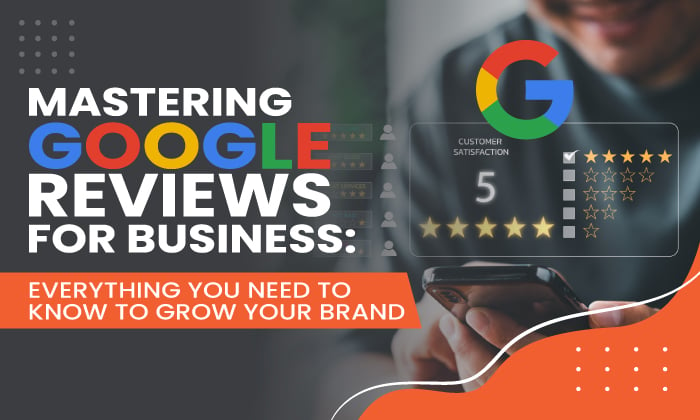
As a business owner, you know that online reviews are essential, and they can make or break your business.
In fact, 89 percent of worldwide consumers say they read online reviews before buying products, and 49 percent report trusting those reviews as much as a personal recommendation.
Good reviews can help you attract new customers, while bad reviews can deter potential customers from doing business with you.
That’s why it’s crucial to learn everything you can about Google reviews and how to use them to your advantage.
In this blog post, we’ll show you everything you need to know about Google reviews and ratings, including how to get more reviews, how to respond to negative reviews, and how to use Google My Business to your advantage.
What Are Google Reviews?
Google reviews are public comments and ratings left by customers about your business.
Customers can review businesses on Google Search, Maps, and Local Finder. These reviews are essential because they help potential customers learn more about your business before they decide to patronize it.
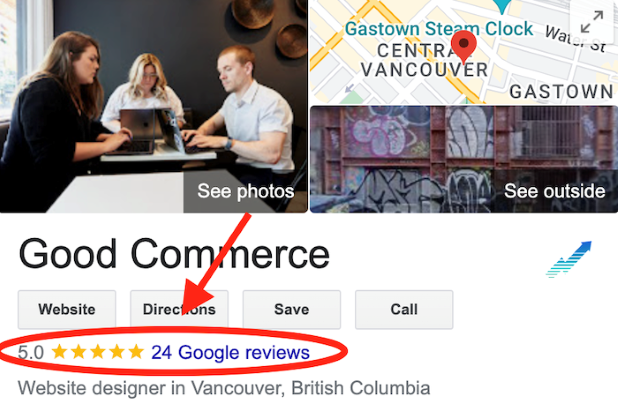
Google reviews can be up to 4,000 characters and include a small writeup and rating from 1 star (lowest) to 5 stars (highest).
It probably doesn’t surprise you that Google is the most popular online review platform, with more than 59 percent of consumers using it.
Why Do Google Reviews Matter for Your Business?
Google reviews for business are critical because they can improve your business’s visibility and click-through rate (CTR) on Google Search and Maps.
A higher CTR means that more people see and click your listing in search results, leading to more customers.
In addition, Google reviews and ratings act as social proof. They show potential customers that other people have had positive experiences with your business, making them more likely to shop with you.
Google reviews for business are also one of the many factors that search engines consider when determining local SEO rankings.
This means that if you can get more positive Google reviews, you may be able to improve your position in local search results. In other words, Google reviews have the potential to bring you more customers and help you grow your business.

Asking for Google Reviews: How to Get Customers to Leave Google Reviews and Ratings
According to BrightLocal, 67 percent of consumers are willing to leave a review for a positive experience, and 40 percent consider leaving a review for a negative experience.
However, just because a customer is willing to leave a review doesn’t mean they will. If you want to increase the number of Google reviews left for your business, you need to make it easy and convenient for customers to leave them.
The best way to do this is by asking your customers directly. Consider including your Google My Business review link in:
- email signatures
- post-purchase confirmation emails
- physical receipts
- thank-you cards or notes
When asking customers to leave a review, make sure to:
- Personalize the request: Address them by name and mention their recent purchase or experience.
- Keep it short and sweet: Customers are more likely to leave a review if the request is simple and to the point.
- Include a link to your Google My Business listing: Make it easy for customers to leave a review by including a direct link.
- Send a prompt: Try sending a short prompt for the review you’d like them to leave. This gives reviewers a starting point and can make sending the review a little easier. For example, “My favorite thing about <company> is….”
NOTE: Most review sites, including Google, do not permit businesses to offer something in exchange for a review. Instead, focus on making it as easy as possible for them to leave their review.
Remember, the best Google reviewers have had a recent, positive experience with your business and are likely to leave a detailed review.
By following these tips, you can get more Google reviews for business and start building your online credibility.
Tips for Responding to Google Reviews
Responding to Google reviews is just as important as getting them in the first place.
When you take the time to respond, you show potential customers that you value their feedback—good or bad. You also have a chance to give your side of the story if a customer leaves a negative review.
Once you start gathering reviews, take the time to respond to positive and negative feedback.
While positive reviews are great for boosting morale, responding to negative reviews is essential for maintaining your business’s reputation.
ReviewTrackers found that more than half of customers expect a business to respond to negative reviews within a week. Yet, 63 percent reported never hearing back from a company about their review!
In addition, research from BrightLocal found that 89 percent of consumers would continue to frequent a business that responds to all of its online reviews.
Tips for Responding to Negative Google Reviews
Follow these steps to help turn a negative review into a positive interaction:
- Thank the customer for their feedback and apologize for their poor experience.
- Acknowledge the issue they raised and offer a solution.
- If appropriate, invite the customer to reach out to you directly so you can resolve the issue offline.
- Once they reach out, consider offering them a discount or coupon to incentivize them to return (and hopefully leave a nicer review.)

Tips for Responding to Positive Google Reviews
Here’s how you can reply to a positive Google review to create a lifetime customer:
- Thank the customer for their feedback and let them know you appreciate their support.
- If appropriate, invite the customer to reach out to you directly so you can thank them personally
- Personalize your response so they feel seen by your business.
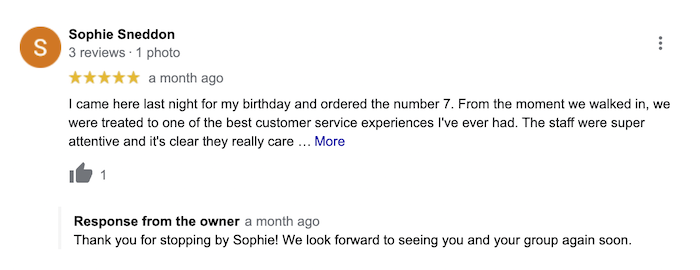
The most important thing to remember when responding to Google reviews is to be responsive, professional, and courteous. By doing so, you’ll show other potential customers that you care about your business and are committed to providing the best experience possible.
How to Leverage Google Reviews for Your Business
Google reviews for business are more than a way to get feedback from customers—they’re also a powerful marketing tool.
Here are five tips for leveraging Google reviews to improve your business.
1. Showcase Reviews on Your Website
Once you have a collection of Google reviews for business on your Google My Business page, you can showcase them on your website using a widget. This gives potential customers an easy way to see what others think of your business before they decide to make a purchase.
Different widgets are available depending on the content management system (CMS) you’re using. Be sure to choose one that’s compatible with your website platform and fits the style of your site.
If you’re not sure how to add a widget to your website, most providers offer instructions or customer support that can help you.
Some popular Google reviews for business widgets include:
2. Use Positive Reviews to Reduce Abandoned Carts
If customers see that other people have had a positive experience with your brand, they’re more likely to complete a purchase.
One of the easiest ways to increase customer confidence is by adding testimonials and product reviews to your checkout process.
A detailed review can help you reduce abandoned carts by:
- helping customers with specific problems
- building trust, which is important for potential buyers
- reducing any friction during the checkout process
When adding reviews to product pages or checkout flows, make sure they’re specific and highlight the features that are most important to your customers.
For example, if you sell headphones, a customer might be looking for reviews that address sound quality, battery life, or comfort.
If you’re not sure which reviews to showcase, start with your most recent ones or those from customers who have made similar purchases in the past.
In fact, online flower delivery service Flowers.ie saw a 37 percent increase in purchases on products that showcased reviews.

You can also use Google reviews and ratings to collect feedback about your business, product, or service. Use this valuable customer feedback to improve your business.
For example, if you see that customers are mentioning a problem with your checkout process, you can take steps to fix that pain point.
3. Update Reviews Regularly
Not only do customers want to see that you have reviews, but they also want to see that you’re actively collecting them. Would you rather shop at a company that hasn’t gotten a review in the past six months, or one that gets them regularly?
If it’s been a few months since your last review, reach out to some of your recent customers and ask them for feedback. You can always offer an incentive for leaving a review, like a discount on their next purchase.
PhysioRoom.com increased its review collection by 1,900 percent, which improved its monthly B2B sales by 8 percent.
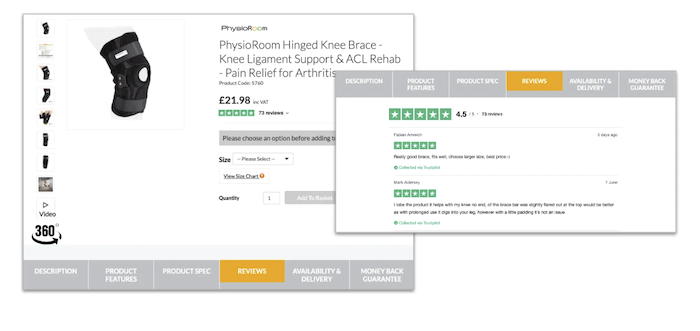
Here are a few ways to collect new reviews:
- Ask customers for reviews in confirmation emails.
- Post signs in your store or office promoting reviews.
- Include review requests in product boxes or packaging.
4. Leverage Best Reviews in Retargeting Campaigns
Did you know retargeted display ads convert almost as much as high-intent search ads (and sometimes more in certain industries)? That’s because you’re targeting people who are already interested in what you have to say.
One way to make your retargeted ads even more effective is to include customer reviews. This social proof will remind potential customers why they were interested in your product or service in the first place– and it could be the push they need to convert.
For example, if you’re selling a new type of toothbrush that’s gentle on sensitive gums, you could include a review in your retargeted ad that says, “I learned to love brushing my teeth again!” or, “I don’t have to dread going to the dentist anymore.”
Similarly, if you’re an accountant, you could include a review that says, “I have so much more time to dedicate to running my business now.”
Here’s an example from TaxSlayer whose featured reviews brought in a whopping 60 percent increase in CTRs.
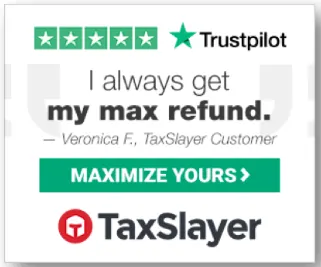
Including customer reviews in your retargeted ads is an easy way to show social proof and improve your click-through rate. When done right, can be a powerful way to increase conversions.
Take the time to read through your reviews and find the ones that would be most impactful for your target audience. Then, start testing different review placements in your ads until you find what works best for your business.
5. Choose Reviews That Elicit Emotion
Think about some of the recent reviews you’ve read online. What really stood out to you?
It likely wasn’t the two-line review about the product working as expected. Instead, it was probably the review that made you feel something. Maybe it was funny, maybe it was weird, but whatever it was, it made an impression.
The same principle applies when choosing which reviews to showcase in your marketing strategy. Look for ones that evoke an emotional response from your target audience. For example, if you’re focusing on new parents, look for reviews that mention how your product has made their lives easier.
On the other hand, if you’re targeting millennials, you might look for reviews that are funny or quirky.
No matter who your target audience is, make sure you’re choosing reviews that will resonate with them on an emotional level. The bigger the impact you can make, the more likely you are to convert prospects into customers.
Here’s an example from G-Form, an athletic equipment company that isn’t afraid to flex its funny bone.
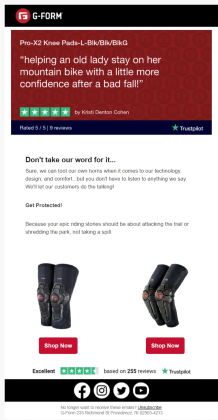
Google Reviews for Business Frequently Asked Questions
Are Google reviews fake?
Generally no. Google states it has a zero-tolerance policy for fake reviews. However, BrightLocal found that 62 percent of consumers believe they have seen a fake review in the last year. If you’re unsure about the legitimacy of a review, check the username and avatar of the reviewer to see if anything is suspicious. You can also look at previous reviews the reviewer has made.
Pay attention to the date, time, and location of past reviews. If you see a reviewer has left reviews in cities across the world in a matter of days, that’s a red flag. If the reviewer has never left another review, that’s also something to take note of. If you believe a review is fake and in violation of Google’s policies, you can request a removal from Google.
Can Google reviews be removed?
In some cases, yes. Google has a request removal system. However, the company is very clear that decisions to remove (or not remove) a review is final. In most cases, Google will only remove reviews that are in violation of their policies. These include reviews that contain profanity or sexually explicit language, reviews that promote illegal activity, reviews that are off-topic, and spam.
Should I respond to negative Google reviews?
Yes, responding to Google reviews is a critical part of managing your online reputation. By responding to negative reviews, you can turn a bad situation into a positive one. When responding to negative reviews, always be professional and courteous. Never leave a response that is derogatory or inflammatory.
How many Google reviews should I try to get?
As many legitimate reviews as possible. Generally, the more Google reviews for a business you have, the better. Having more reviews will protect your Google My Business rating if you do get a negative review. A good rule of thumb is to try to get at least 50 Google reviews.
Conclusion: Google Reviews for Business
Google reviews for business are a powerful way to build trust and credibility with potential customers.
Reviews show customers that your business is reputable. They can also highlight your company’s best assets and show your customer service commitment.
By following Google’s review policies, you can build a strong list of reviews that will benefit your business. Plus, by responding to negative reviews in a professional manner, you can turn a bad situation into a positive one.
Do you feel Google reviews have an impact on your business?

See How My Agency Can Drive Massive Amounts of Traffic to Your Website
- SEO – unlock massive amounts of SEO traffic. See real results.
- Content Marketing – our team creates epic content that will get shared, get links, and attract traffic.
- Paid Media – effective paid strategies with clear ROI.